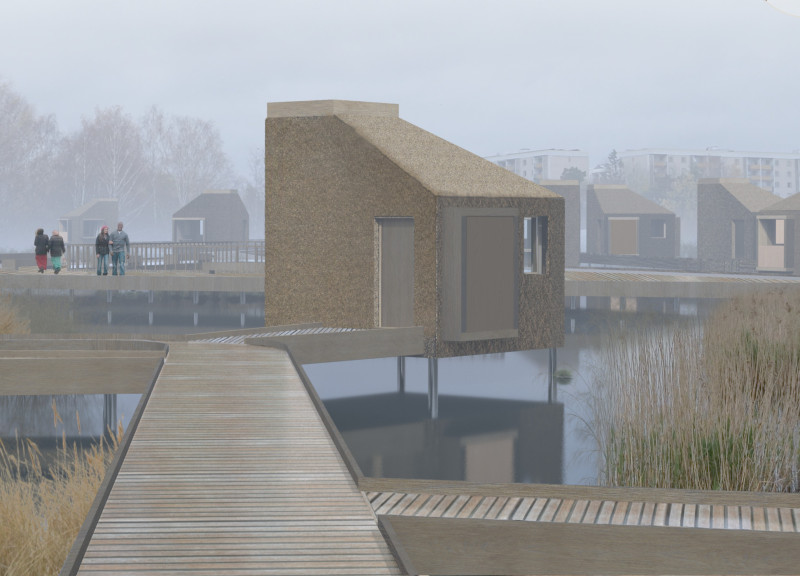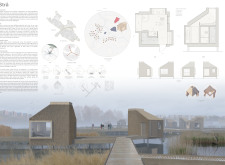5 key facts about this project
Strå addresses the social and environmental challenges found in Rinkeby and Tensta, suburbs of Stockholm. These areas are labeled as "especially vulnerable," encountering issues such as high crime rates, unemployment, and few educational opportunities for residents. The design focuses on creating microhousing paired with shared resources to promote community engagement and resilience.
Microhousing Concept
Small housing units serve as individual homes as well as collective spaces for residents. The design draws inspiration from Sweden's "egnahemsrörelsen," which aimed to provide affordable housing to working-class families. Residents are encouraged to take part in carpentry apprenticeships, allowing them to build their own homes. This involvement fosters a sense of ownership and promotes a direct connection between inhabitants and their living environment.
Environmental Integration
A key feature of the design is a wetland created in the southern section of the grass field separating Rinkeby and Tensta. This wetland addresses flooding issues—a concern due to the area's low elevation. Besides serving as a functional solution to water management, it enhances local biodiversity. Walking paths throughout the wetland promote accessibility, encouraging interaction among residents from both suburbs.
Materiality and Construction
The choice of materials is important for functionality and sustainability. Reed and cattail are utilized as locally sourced materials. Reed will thatch roofs and facades, improving thermal performance. Cattail, cultivated within the wetland, will provide insulation in the microhomes, enhancing energy efficiency.
Microhomes will rest on polished, carbon-neutral stainless steel plinths, which elevate the structures off the ground. The reflective nature of this steel creates an appearance of floating homes. This thoughtful design approach encourages community interaction and emphasizes ecological awareness, presenting a modern vision for urban living in the suburbs.



















































